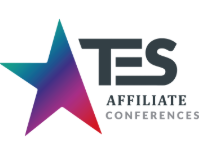How to Prevent Your Content From Being Ripped Off
Piracy is one of the most difficult problems that adult webmasters have to deal with, particularly for those who produce their own content. Adult content is pirated more than anything else on the net, costing webmasters huge amounts of lost business.Piracy is one of the most difficult problems that adult webmasters have to deal with, particularly for those who produce their own content. Adult content is pirated more than anything else on the net, costing webmasters huge amounts of lost business. After all, if surfers can get it for free, they won’t be paying customers.
It’s difficult to determine how much pirates are costing you because, chances are, you don’t know where all the pirates are located. Even the best tracking services can’t find everything. And even if pirates are just casually trading your material in small numbers, that can change very quickly into a major problem. Besides, all it takes is one pirate to lift your material, set up a competing website, and you’re losing money.
So what can you do? There are some solutions available, but many of them also raise issues of customer annoyance and cost. Generally, the more you protect your material, the more it will cost you, and paying customers may be put off by the protection. But there are also some affordable solutions, so I’ll try to discuss the pro’s and con’s of each.
Let me also say that I don’t pretend to be an expert on fighting piracy, I have much to learn. But I have interviewed several webmasters and experts to try to give you as much accurate information as possible.
Right Click Disable
This is a fairly easy and cost effective way to help protect content on your site. Basically it disables the right click function on most mouses, eliminating the “Save Target As” feature, which is the easiest way that pirates lift your material. “Right Click Disable” is freely available on most Java Script sites, and it’s also a common feature in programs like Dreamweaver 4, which most webmasters have.
However, sophisticated pirates can get around this feature, although it is a pain for them. And there are programs available which bypass this feature, although I’ve also read mixed reviews about their effectiveness. Also, “Right Click Disable” will work on many browsers, but not all of them.
Many webmasters also feel that customers should be able to easily copy content that they’re paying for, particularly if it’s picture content. If this is a problem for you, perhaps the “Right Click Disable” feature is more feasible for your free preview areas, where pirates have easy access to your material. It won’t totally eliminate the piracy, however, you can at least make it more difficult for them, which can go a long way towards some protection.
Tracking and Removal
“Right Click Disable” is the only method I am aware of that helps prevent photo piracy. But if you want to track pirated photos, there are services like Digimarc (http://www.digimarc.com) and Bay TSP (http://www.baytsp.com). The cost of these services vary, generally increasing with the amount of material you’re tracking.
Digimarc provides watermarking technology that is embedded in photos as a tracking device. However, Digimarc doesn’t track videos, although they’re developing this option for the future.
Some webmasters say you have to be careful about how much durability you embed in the photo watermark. If the durability factor is too high, it degrades the image. If the durability factor is too low, Digimarc’s spider won’t pick up the image when it searches the net. Also, Digimarc’s spider capabilities are limited to only search engines, although they are working on expanding this.
Bay TSP has a different technology called DNA, which essentially takes samples from the content itself for tracking and eliminates the need for watermarking. This can be useful for webmasters who didn’t watermark older material that they would now like to track on the net.
Bay TSP also has wider search capabilities than Digimarc because they also search peer to peer networks and newsgroups where pirates trade material. Bay TSP will also help you remove pirated material, and they track video as well, but this can be much more expensive.
So are these tracking services worth the money? Some say yes, some say no. While webmasters have successfully tracked pirates through these services, others say they’ve discovered just as many pirates on their own through word of mouth, i.e. customers, other webmasters, etc. Since it’s impossible to search the entire Internet, tracking services can be limited.
It’s imperative that you register your content with the U.S. Copyright Office, so that once you track the pirates, you may legally demand that your content be removed. Most webmasters say that sending emails usually works, but if it doesn’t, complaining to the hosting company and billing company is also effective. In tough cases, where pirates refuse to remove material, lawsuit threats with formal cease and desist letters from attorneys are also very effective.
There’s no way to do business on the net and completely eliminate piracy, but hopefully this information will be helpful for some webmasters.










